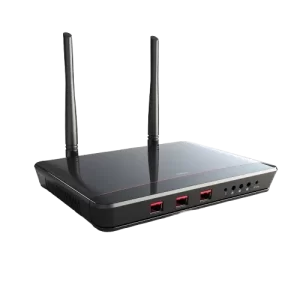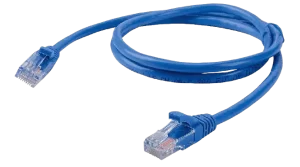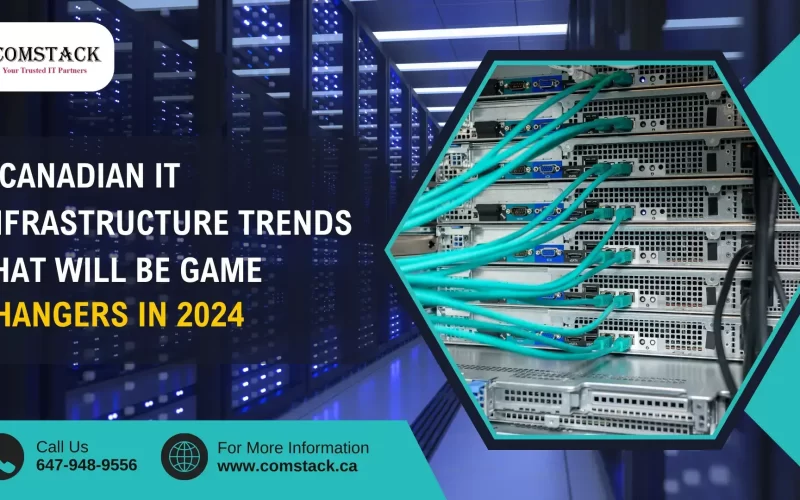In the realm of networking, Ethernet cabling serves as the backbone for data transmission, connecting devices within local area networks (LANs) and wide area networks (WANs). In Canada, where reliable connectivity is paramount, choosing the right type of Ethernet cable in Canada is crucial for ensuring optimal performance and efficiency.
In Canada, where connectivity demands are high and reliability is paramount, the selection of Ethernet cabling plays an important role in maintaining seamless communication across local area networks (LANs) and wide area networks (WANs). Whether it’s powering the infrastructure of bustling urban centers like Toronto or facilitating connectivity in remote regions like the Canadian Arctic, Ethernet cables form the backbone of data transmission networks. From the bustling corporate offices of Vancouver to the remote oil rigs off the coast of Newfoundland, businesses and industries rely on robust Ethernet cabling solutions to ensure uninterrupted connectivity and efficient data transfer. In this diverse landscape, where environmental factors and geographical challenges can impact network performance, the choice of Ethernet cable type becomes even more crucial. Whether it’s shielded twisted pair (STP) cables for enhanced protection against electromagnetic interference or fiber optic cables for long-distance transmissions with minimal signal degradation, Canadian organizations must carefully evaluate their networking needs to select the most suitable Ethernet cabling solutions. With the right choice of Ethernet cables, Canadian businesses can ensure reliable connectivity and optimize network performance to meet the demands of the digital age.
Understanding CAT5, CAT6, CAT7, and CAT8 Cables
CAT5, CAT6, CAT7, and CAT8 are different categories of Ethernet cables, each with its own specifications and capabilities. Let’s delve into the distinctions between these categories:
CAT5 Ethernet Cabling
CAT5 cables were once the standard choice for Ethernet connectivity. They are capable of transmitting data at speeds up to 1000 Mbps (1 Gbps) over short distances. However, they are now considered outdated compared to newer alternatives due to their limited bandwidth and susceptibility to interference.
Pros:
Cost-effective option for basic networking requirements.
Widely available and compatible with most devices.
Adequate for small businesses and home networks with moderate data usage.
Cons:
- Limited bandwidth and speed compared to newer cable types.
- Not ideal for high-performance applications or future-proofing.
CAT6 Ethernet Cabling
CAT6 cables represent a significant upgrade over CAT5, offering higher bandwidth and better performance. They can support data transfer speeds of up to 10 Gbps over short distances, making them suitable for demanding applications. Additionally, CAT6 cables feature improved insulation and reduced crosstalk, enhancing overall reliability.
Pros:
Enhanced performance and bandwidth compared to CAT5.
Better suited for streaming, VoIP, and other bandwidth-intensive applications.
Provides future-proofing for evolving network demands.
Cons:
- Higher cost compared to CAT5.
- Installation may require professional assistance due to stricter specifications.
CAT7 Ethernet Cabling
CAT7 cables are designed to meet the increasing demands of modern networking environments. They feature shielding and twisted pair construction, providing superior protection against external interference and noise. With support for speeds of up to 10 Gbps at distances of up to 100 meters, CAT7 cables are ideal for high-speed data transmission in Canada’s dynamic networking landscape.
Pros:
Support for speeds of up to 10 Gbps and beyond.
Enhanced shielding reduces signal degradation and ensures reliable performance.
Suitable for data centers, industrial settings, and other high-density environments.
Cons:
- Higher cost compared to CAT5 and CAT6.
- Less common and may require specialized equipment for installation.
CAT8 Ethernet Cabling
CAT8 represents the latest advancement in Ethernet cabling technology. Offering blazing-fast speeds of up to 40 Gbps and support for frequencies of up to 2000 MHz, CAT8 cables are engineered to meet the requirements of bandwidth-intensive applications. While CAT8 cables are relatively new to the market, they are increasingly gaining traction in Canada’s rapidly evolving networking infrastructure.
Pros:
- Highest bandwidth and speed capabilities among ethernet cable types.
- Ideal for data-intensive applications and future-proofing network infrastructure.
- Improved shielding and noise resistance ensure stable performance in demanding environments.
Cons:
- Highest cost among ethernet cable options.
- Limited availability and may require specialized hardware and expertise for installation.
Comprehensive guide on CAT5e and CAT6a
In Canada, both CAT5e and CAT6a Ethernet cabling are widely used for networking purposes, each offering distinct advantages depending on the specific requirements of the network infrastructure.
CAT5e (Category 5e) Ethernet cables are a common choice for many installations due to their affordability and versatility. They support data transmission speeds of up to 1 Gbps (gigabit per second) and are suitable for most standard networking applications in homes, small businesses, and even some larger enterprises. CAT5e cables are capable of handling gigabit Ethernet (GbE) connections and are backward compatible with older standards like CAT5, making them a cost-effective solution for upgrading existing networks.
However, CAT5e cables have limitations when it comes to higher bandwidth requirements and longer cable runs. They are more susceptible to electromagnetic interference (EMI) and crosstalk compared to newer cable standards like CAT6a.
CAT6a (Category 6a) Ethernet cables, on the other hand, offer significantly higher performance and reliability compared to CAT5e cables. They are designed to support 10 Gbps data transmission speeds over longer distances (up to 100 meters) and are ideal for high-bandwidth applications such as data centers, large enterprises, and environments where network performance is critical.
One of the key features of CAT6a cables is their improved shielding, which reduces the risk of EMI and crosstalk, ensuring more stable and consistent connectivity. This makes CAT6a cables suitable for installations in challenging environments where interference from power lines, machinery, or other sources may be a concern.
In Canada, where businesses and organizations rely on robust networking infrastructure to support their operations, both CAT5e and CAT6a Ethernet cabling find widespread use. While CAT5e cables remain a cost-effective solution for many applications, CAT6a cables are increasingly favored for high-performance networks that demand higher speeds, greater reliability, and future-proofing against evolving technology requirements. Ultimately, the choice between CAT5e and CAT6a Ethernet cabling in Canada depends on factors such as budget, performance needs, and the specific demands of the networking environment. CAT5e and CAT6a Ethernet cabling are the two most common methods of establishing reliable network connectivity in Canada, each with unique features to suit different needs.
CAT5e (Part 5e):
CAT5e cables are widely used for Ethernet networks and are designed to support data transmission speeds of up to 1 gigabit per second (Gbps) over distances up to 100 meters
CAT5e cabling in Canada is typically used in residential and small business environments, where moderate bandwidth requirements and costs are a factor
The CAT5e cable features four twisted copper cables, with enhanced winding and insulation to reduce crosstalk and electromagnetic interference, and provide stable data transmission
Despite being an old standard, CAT5e remains popular due to its affordable price and compatibility with most communication devices.
CAT6a (Part 6a):
The CAT6a cable is an improved version of the CAT6 cable, providing higher performance and bandwidth capabilities.
CAT6a cabling is often chosen in Canada for applications that require high-speed data speeds and high reliability, such as large enterprises, data centers, and high-density environments
CAT6a cables support data transmission speeds of up to 10 Gbps over distances up to 100 meters, making them suitable for high-speed communication requirements
Compared to CAT5e, CAT6a lines have stricter structural criteria, stronger bends and improved protection, resulting in better performance and reduced signal interference
Although CAT6a cables typically come in more expensive than CAT5e, they offer more future-proofing and can support emerging technologies and higher bandwidth requirements.
The CAT5e and CAT6a Ethernet cabling options meet a variety of networking needs in Canada. While CAT5e is a cost-effective solution for basic connectivity needs, CAT6a delivers high performance and bandwidth capabilities, making it suitable for applications and environments that demand high-speed, reliable data Select Ethernet cabling the most appropriate solution for the needs of organizations in Canada To do, you must examine your specific communication needs and budget constraints.
Choosing the Right Ethernet Cable for Your Needs
When selecting an Ethernet cable for your networking needs in Canada, consider factors such as bandwidth requirements, distance limitations, and environmental conditions. While CAT5 and CAT6 cables may suffice for basic applications, CAT7 and CAT8 cables offer superior performance and reliability for demanding scenarios.
Conclusion
In the realm of Ethernet cabling in Canada, choosing the right cable category is essential for ensuring efficient data transmission and network performance. Whether it’s CAT5, CAT6, CAT7, or CAT8, each category offers distinct advantages tailored to specific requirements. By understanding the differences between these cable types, you can make informed decisions to meet your networking needs effectively. Know more details about ethernet cabling click here: https://en.wikipedia.org/wiki/Ethernet_over_twisted_pair
Why we use Ethernet cabling?
Ethernet cabling is essential for connecting devices within local and wide area networks, facilitating reliable data transmission. It offers high-speed connectivity, scalability, and stability, making it ideal for various applications, from homes to large enterprises. Ethernet cabling ensures efficient communication, supporting the backbone of modern digital infrastructure.





















